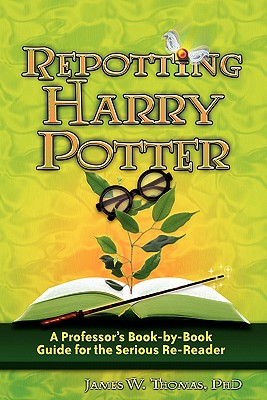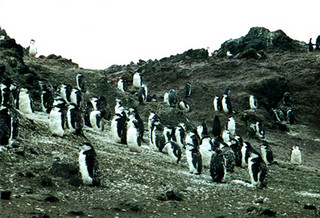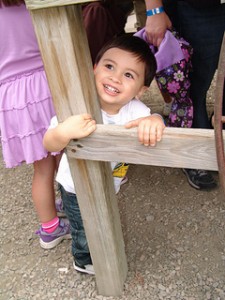Note: I regularly ghost-write for my clients…here’s one of my favorite articles I wanted to share with you.
Did you know that adolescents with autism spectrum disorder (ASD) are at least three times more likely to be verbally and physically bullied? Some experts believe that the primary characteristics of ASD, such as communication difficulties and trouble understanding sarcasm and humor, make some kids with ASD easy targets for bullies.
As we already know, victims of bullying are at greater risk for depression, anxiety, and other mental health problems; problems that can compound the stress and anxiety many autistic children already feel in social situations. Bullying of those with ASD tends to increase as the child reaches adolescence most likely due to the more increasingly complex social interactions and pressure for teens to conform.
As with most forms of bullying, bullying of those with ASD decreases with increased awareness, bystander intervention, and peer support. Expert believes that Social/Emotional Learning (SEL) programs that specifically address interacting with people who have disabilities can help adults and children become better equipped to interact with those with ASD as well as intervene in a bullying situation.
Please join me and countless others on April 2nd, World Autism Awareness Day (WAAD), as we raise awareness about this growing global health crisis. In the United States, 1 in 88 people have ASD, the majority of them are male. According to the National Autism Association, “Autism impacts the normal development of the brain in the areas of social interaction, communication skills, and cognitive function. Individuals with autism typically have difficulties in verbal and non-verbal communication, social interactions, and leisure or play activities.” Experts believe early detection and intervention can help those diagnosed with ASD to reach their full potential.
Around the world, hundreds of stores, stadiums, bridges, landmarks, hotels, homes, and offices will Light It Up Blue next Wednesday, April 2nd. You can help by lighting up your own home, wearing blue that day, sharing information about Autism with your social network, or attending a local fundraising event.
For more information about WAAD and Light It Up Blue, visit AutismSpeaks.org.
Photo: ©2013 No Limit DJs (https://www.flickr.com/photos/nolimitsdjs/8614981410)

Unfinished Journals (photo by Julie Gibbons 2010 via Flickr)
I admit it: I am only a sporadic journal writer. I can go for months without writing in my journal and then one of several things happens (see below) and I’m back on the journaling train once again until the momentum wears off.
It’s quite revealing why I start journaling after an absent period: emotional catharsis is desperately needed, or I stumble across one of my many journals and become wistful, or I find a new and improved method of journaling (sometimes it’s a lovely new bound journal but often it is a new piece of software or the like). No matter the reason, I only tend to journal when I am either inspired or requiring release. Interesting.
Perhaps this is why my sporadic journal entries waffle between mind-numbing banality and horribly cheeky ranting and raving!
I understand intellectually that writing a journal by hand is supposed to be more “connected” with your inner self but I type so much faster than I can write and my hand has become so unaccustomed to writing that it cannot sustain any sort of writing for any length of time. So I always find myself doing a combination…typing some and writing some. In my opinion, it doesn’t really matter as long as I get the thoughts out of my head and onto paper.
I’ve always longed to be someone who journals regularly and this blog is certainly helping (although I save the really personal stuff for my offline entries). Lately, I’ve been researching journal prompts. I don’t usually need them to get my creative juices flowing but I’m finding them to be a way to gradually ease myself back into this process. I’m not going to set any sort of rules about journaling so that I don’t become discouraged too quickly. Anyway, life is supposed to be fun, right?
This time of year I am particularly drawn to journaling again. Perhaps it’s the stress of the holiday season or the promise of the blank slate of the new year…either way, I’m pleased that I have at least several beginning-of-the-year entries each year to track my growth over time.
Three things that never come to any good:
Christmas pigs, Michaelmas fowls, and parsons’ daughters.
Traditional English proverb
I love history and although my family doesn’t celebrate Michaelmas Day, I have enjoyed learning about its traditions. Michaelmas Day is the feast day of St. Michael and All Angels in the Christian calendar. Archangel Michael is widely regarded as the “chief of angels” and the patron saint of the sea, ships and horses.
In medieval times, Michaelmas Day was a “quarter-day”, one of four days in the year to pay rents and settle old debts. In England and northern Ireland, it was thought that if you ate a goose on Michaelmas Day you’d have good luck for the next year. Enjoying a goose on September 29th is still a tradition today for many families in the United Kingdom.
In some circles, archangel Michael is considered to be the angel of protection.
More about Michaelmas Day and the archangel Michael:
- Some food history of the feast (The Old Foodie)>>
- Folklore and associations with the day (Wilson’s Almanac)>>
- Archangel Michael from the Catholic Encyclopedia>>
- Archangel Michael (Sarah’s Archangels)>>
Angels have been a favorite subject for artists and we’ve found many incredible pieces of art featuring archangel Michael.
Tags: history
 My foray into the world of Pottermore several months ago inspired me to do a serious and slow re-reading of all of the Harry Potter novels. I’m not one for reading slowly, especially when the book is exciting and the action is moving me along. After seeing the movies several times (which I love), I am appreciating the character development and humor that is so much more prevalent in the novels.
My foray into the world of Pottermore several months ago inspired me to do a serious and slow re-reading of all of the Harry Potter novels. I’m not one for reading slowly, especially when the book is exciting and the action is moving me along. After seeing the movies several times (which I love), I am appreciating the character development and humor that is so much more prevalent in the novels.
I’ve found that simultaneously reading James W. Thomas’ book Repotting Harry Potter: A Professor’s Book-by-Book Guide for the Serious Re-Reader has been particularly helpful this time around. My process is thus: I start by reading a section of Repotting then read ONLY the corresponding chapters in the HP book. Sometimes I re-read the section in Repotting for additional insights. It’s slow-going but I’m spending some time really thinking about the story and characters as well as appreciating Rowling’s writing ability.
I don’t always agree with Thomas and sometimes his connections and comments are a bit of a stretch in my mind but I’m finding it to be like being part of a book group that takes the content seriously. I am enjoying the foreshadowing and humor discussions as well as the tidbits about the origin of the names of people, place and things in the books. I also appreciate Thomas’ comparisons with other pieces of literature and recommendations for additional reading.
I like that Repotting recognizes that we already know what is going to happen in each book and the entire series. It helps us remember what we didn’t know once upon a time during our first reading and make broad connections across chapters and across books. I’m thoroughly enjoying my re-reading sessions that have me digging deeper into Rowling’s world and thought process. This whole experience has been an excellent complement to Pottermore. I finished book 3 a few weeks ago and am eager to continue this experience.
Tags: Harry Potter

Chinstrap Penguins on Aitcho Island (Photo: Bethany Mitchell)
Calling all penguin lovers! The British Antarctic Survey posts a new penguin photo every day in its “Penguin of the Day” image gallery. The penguins are adorable and the photos are fantastic.
See one or two you love? You can purchase the images as well!
The Antarctic penguins await you here>>
On the left, I’ve included one of the lovely penguin photos I took on my trip to the Antarctic Peninsula in 2001.
Tags: Antarctica, penguins

Happy to be Here
While I can appreciate a lovely posed photo of a baby or child, my favorites are always the candid shots. The ones where the child is caught in the act of loving what they are doing, contemplating life, being silly, or just hanging around.
It may take hundreds of shots to capture that perfect moment but I believe the results are worth the effort.
Here we have a fantastic photo I took of my 2-year-old nephew as we waited in line to ride the ponies at Remlinger Farms last weekend. I doubt he knew exactly what we were going to do…I think he was just excited to be at a new place with his favorite people surrounded by other kids laughing and having fun.
Tags: photography
“Living well and being happy is the best revenge on those who bully us.”
“As you go through life, you will realize that there are a lot more of ‘us’ holding you up than ‘them’ putting you down!”
Letters to a Bullied Girl is a collection of some of the thousands of letters sent to Olivia Gardner, a teen who became depressed and left school after being relentlessly bullied there and online for being an epileptic. Teen sisters Emily and Sarah Buder read about Olivia’s ordeal in the local newspaper and decided to take action: they contacted Olivia’s mother with the idea of asking members of their community to write letters of encouragement and support to Olivia. After local and national coverage of the project, the sisters received thousands of letters from around the world. Some recount stories of being bullied now or in the past, some came from those who had been bullies themselves…all included words of insight, comfort and hope.
One former bully wrote, “I, along with several of my friends, made a girl’s life utter hell during middle school. I have never spoken about this to anyone because I feel so horrified that I had the capacity to be so mean to someone. It was heartbreaking to see your sad face on TV and hear you talk about your depression as a result of the bullying. I am sure that my actions created similar wounds in this girl. I will always live with the pain of knowing that.”
I highly recommend this book as a starting point for discussing the issue of bullying with the children in your life. The stories are touching and the emotions are real. My friend Jacquie Ream, author of several young adult books about bullying, has shared with me that she is often amazed at how often the children she speaks to about bullying say that they were “just teasing” and had “no idea” their words or behavior were causing so much pain. I wholeheartedly agree with Jacquie’s approach to the problem: Let’s stop the cycle of bullying by bringing the feelings out into the open.
I hope you’ll be as moved and inspired by the stories in Letters to a Bullied Girl as I was. I’ll leave you with a parting thought from one of the letters in the book: “We as humans go through things in our lives that will be handled one of two ways: they will make you bitter or they will make you better. If they make you bitter, you will take it out on everyone else or blame other people for what has happened. If they make you better, your personality will be one that people will want to be around. You’ll be a person with a lot of hope in yourself and others.”
Read the book: Letters to a Bullied Girl by Olivia Gardner (Harper Paperbacks, August 2008)
Additional Note: if you visit Amazon.com to purchase this book (or read the reviews) you will see a video review from the author who shares information about her story that may have you question the authenticity of the book. I believe that the book stands as a valuable resource on its own merits even if portions of Olivia’s bullying story were not accurate as reported in the news (or in the book). The letters Emily and Sarah Buder received are real and there is still much to be learned from the stories the letters tell.






